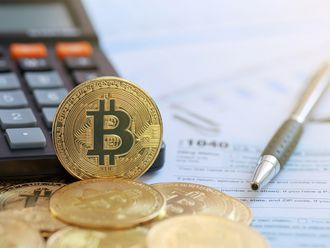Numerous indications point to success of Omani authorities in coping with local challenges on the one hand and benefiting from international developments on the other. Positive news includes growing budgetary spending without sparking inflation as well as a steady rise in oil output.
Oman's oil output amounted to 882,000 barrels per day (bpd) in July, the highest in many years. As such, oil output averaged some 878,000 bpd at the start of 2011, up from 858,000 bpd in the corresponding period in 2010. Yet oil production capacity stood at 760,000 bpd in 2008.
Like other Gulf Cooperation Council (GCC) countries, the petroleum sector accounts for three quarters of Oman's treasury income, divided between 62 per cent for oil and 13 per cent for gas. Still, Oman is not a member of the Organisation of Petroleum Exporting Countries (Opec) and thus is technically free to raise output levels when deemed necessary. However, the country is noted for adopting conservative policies across the board, oil not excluded.
The primary credit for a steady rise in oil output goes to the Mukhaizna oil field. Occidental of the US and its partners won a concession back in 2005 to develop the field. At the time of winning the concession, Occidental and its partners indicated interest in investing some $2 billion (Dh7.34 billion), as part of efforts to increase Mukhaizna's production to 150,000 bpd in a span of five years.
Rising income
To be sure, rising oil income serves as a key reason behind growing public sector spending, with new statistics suggesting a total spending of $24 billion this fiscal year. This is a sharp rise from the originally projected $21.1 billion spending.
Another reason for higher spending power is the assumption of a relatively low oil price of $58 per barrel while preparing the budget for the fiscal year 2011. Conversely, it is likely that average oil price would hover around $100 per barrel during the year, hence allowing for higher income and therefore spending.
Stronger actual spending falls in line with government efforts for addressing some of the root causes of unrest erupting at the start of 2011 in the industrial town of Sohar. Grievances of protesters focused on issues such as ensuring sustained availability of fresh jobs for locals. Much to their credit, the authorities had set aside a hefty $2.6 billion for spending on numerous projects and initiatives including creating some 40,000 jobs in government departments and establishments.
As it is the case with other GCC countries, unemployment in Oman is not an exact science. By one account, the jobless rate stands at around 15 per cent of eligible Omani nationals. Still, available statistics point out disturbing facts about demographics, with about 43 per cent of the population being below 15 years of age.
Omani nationals assume more than 90 per cent of jobs in governmental departments. As such, civil and security apparatus could not sustain a sizable number of locals in a short period of time.
Also, the notion of enhancing employment of Omani nationals at governmental departments runs contradictory to Vision 2020, in turn calling for enticing locals to find jobs in private sector establishments.
At any rate, higher income and thus higher spending can help explain rising nominal growth of the country's gross domestic product (GDP) by 15 per cent in the first quarter of 2011. Yet, GDP rise in not causing serious inflationary pressures especially when compared to 2007 and first half of 2008. Inflation rate is set to average an affordable 4 per cent in 2011.
Clearly, Omani officials are pressing for realising the country's economic potential while addressing the challenges.
The writer is a Member of Parliament in Bahrain.












